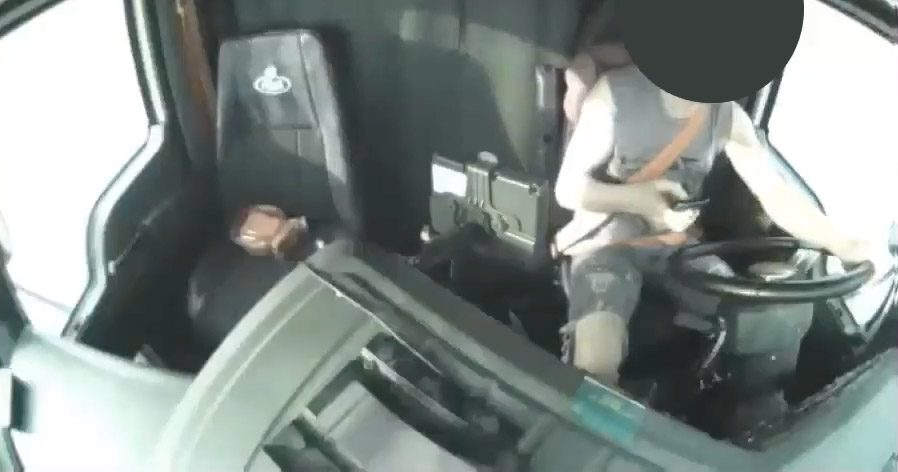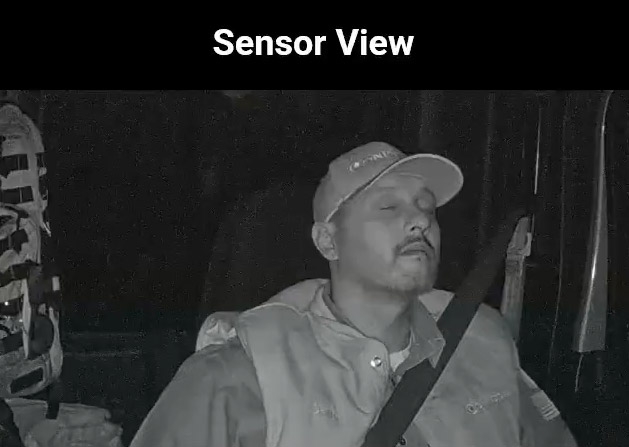
According to recent estimates, 94% of traffic collisions are caused by human error. And 80% of collisions are caused by driver inattention three (3) seconds prior to the incident, with inattentive driving being responsible for over 3,000 deaths per year in just the United States. Other major causes include unsafe lane changes (52%) and speeding (33%).
Where large trucks are involved, the statistics are not encouraging. The National Highway Transportation Safety Administration’s most recent report covers the year 2021 and shows that injuries and fatalities in large truck-involved collisions are both at a 10-year high.
In theory, whatever is caused by human action can also be prevented by better human actions. But how do we get professional drivers, who are human like the rest of us, to take better actions? That’s where a complete video safety system, that includes both artificial intelligence and human intelligence, can help.
Intelligent Video Safety is More Than Just an AI Dashcam
To fully appreciate the value of AI-based video, it first helps to understand that AI dash cams are not a basic dashcam. Dash Cams, as we know them, generally only exist on the vehicle. They record events, but they have no connection to any backend system that can make use of the recordings.
An AI-supported video system is far more extensive. Multiple cameras simultaneously view the road ahead and the driver’s actions inside the cab, creating a side-by-record of road situations and the driver’s involvement or reaction. It can alert the driver in real time if something is off. Incidents can be reviewed by safety professionals far away from the vehicle. And the system accumulates data that can be used to coach drivers post-trip, much like video of football games can be used to coach players.
Why AI-Based Video Safety Systems are Needed
Every Trip Can Put a Fleet at Risk
The most important reason for reducing the risk of crashes is human injury. In 2021, 13,823 people were injured in large-truck crashes, and 582 were killed, the highest number in a decade. Beyond the human cost, the financial consequences can inflict lasting damage on a business. The cost of $1 million-plus lawsuits that get to court rose nearly 867% from 2010 to 2018, to over $22 million. Unsurprisingly, insurance premium rates are up 47% per mile in the last decade. For some companies, the cost of legal defense or loss at court can put the entire business at risk. The cost to a company’s brand is substantial as well.
Why Things Go Wrong on the Road
Fleets are at risk from a variety of factors. For one, professional driving is a tough job. Trucks are surrounded on every side by non-professional drivers, which gives truck drivers an added responsibility. In the US, 43% of the roads they contend with are in either “poor or mediocre” condition. It’s over these roads that they’re trying to meet a growing desire for near-instant delivery, the Amazoning of expectations.
Distracted Driving
Today’s distracted driving goes far beyond fiddling with the radio or being mesmerized by a passing train for a moment. Our devices’ demand for attention is addictive, not to mention onboard navigation and computers. And that 3-second statistic is a lifetime at highway speeds. Conditions ahead can change in an instant.
Overconfidence
There’s no doubt that years of experience in every road condition can be a driver’s best friend. But we’ve also seen it tempt overconfidence and a risky, done-it-a-thousand-times approach to driving situations. Our cameras have noted what we call “planned distractions”, i.e., pulling into the slow lane and turning on the Cruise Control to attend to one thing or another.
Drivers are People Too
Say a driver starts a full shift at 10 pm. Is it likely they got a good eight hours of restorative sleep before starting? How is everything else in their lives going? Whatever it may be, good professional drivers know they have to work extra hard to resist the same moods, annoyances, fatigue, boredom, or bouts of impatience that all of us have to face, because they’re in much bigger vehicles for many more hours at a time, and that’s their job.
But as we said, even the best professional drivers are just as human as the rest of us. And it’s the human factor in driving that an AI-based video system was designed to observe, record, and help correct. And, ultimately, reduce the risk to drivers, fleets, and everyone else on the road.
AI Dashcams and Intelligent Video Safety Systems Address the Human Factors
What AI Dashcam Video Safety Can Do
No safety system can prevent all crashes or make a better driver out of someone who’s not that interested. What it can do is help companies create a data-paved path to improve driver awareness and skills, develop safety benchmarks, and instill and solidify a culture of safety among all key constituencies: C-Suite, Safety, Operations, Risk, Legal, and, most importantly, the Drivers.
Coaching, Based on a Record of Driver Behavior
AI-supported video safety keeps constant eyes on the driver and the road ahead together. Whatever the driver and vehicle are doing, the camera sees it. In Image 1 below, the camera sees the driver reading a pamphlet and the vehicle is veering onto the shoulder. In the small text on the left, the red triangle indicates the sharp swerve back onto the road. In Images 2 and 3, the camera notes a driver focused on his phone and a driver drifting off.



With a video record in hand, each of these drivers can be coached to reduce recurring risky behaviors. The system will also observe and note for coaching things like aggressive acceleration and braking, speeding, unsafe lane changes, and other risky behaviors.
Real-Time Alerts
After-the-fact coaching is great. But it’s in the moment, on the road, that drivers need to be alert, focused, awake. A capable AI system will not only “see” what’s going on, but pull together various factors like speed, acceleration, and G-force. Sophisticated ‘computer vision’ can detect and analyze head and eye movements. And if a set of circumstances seems ‘not quite right’ according to pre-programmed definitions, an audible, at times penetrating alert will be issued inside the cab to snap the driver back to attention.
Invest in AI Dash Cams for a Safer Fleet
AI-based safety serves all fleet constituencies, from the C-Suite to the drivers, and is of the most valuable technology investments a fleet can make for prioritizing safety and reducing risk. For Safety teams, AI can uncover specific recurring risks to reduce collision frequency and severity. Operations can keep an eye on freight conditions and deliveries, and address driver retention issues. AI can help Risk Management reduce exposure to nuclear verdicts and workman’s comp claims. And Legal can access evidence to exonerate innocent drivers and reduce the cost of claims. And drivers and their fellow travelers can improve the odds of coming home safely.
No one element of AI-based safety will eliminate risky driving or bad outcomes. But through a combination of expert observation, awareness, data analysis, benchmarking, and rewards for safety achievement, all of which is possible if you know exactly what goes on behind the wheel and on the road, behaviors can be changed, statistics can be defied, and businesses and lives can be protected.
Learn about Solera’s AI-Based Video-Safety Solutions
SmartDrive with AI reduces the risks of distracted driving
Using AI, computer vision-based algorithms, and a purpose-built sensor, SmartDrive for Inattentive Driving is much more than just an AI dashcam. It can alert your drivers to high-risk moments, provide video for expert review, and score and provide scored and documented video so drivers can be coached toward better driving habits. We also have solutions for routing, fleet and freight visibility, compliance and ELD solutions, and more.
Watch “Reducing Risk and Distracted Driving with AI Technology”
Jeff Griswold, President of Product Management, Solera Fleet Solutions, SmartDrive, recently conducted a webinar on AI-based video in conjunction with Transport Topics. You can watch the webinar here.